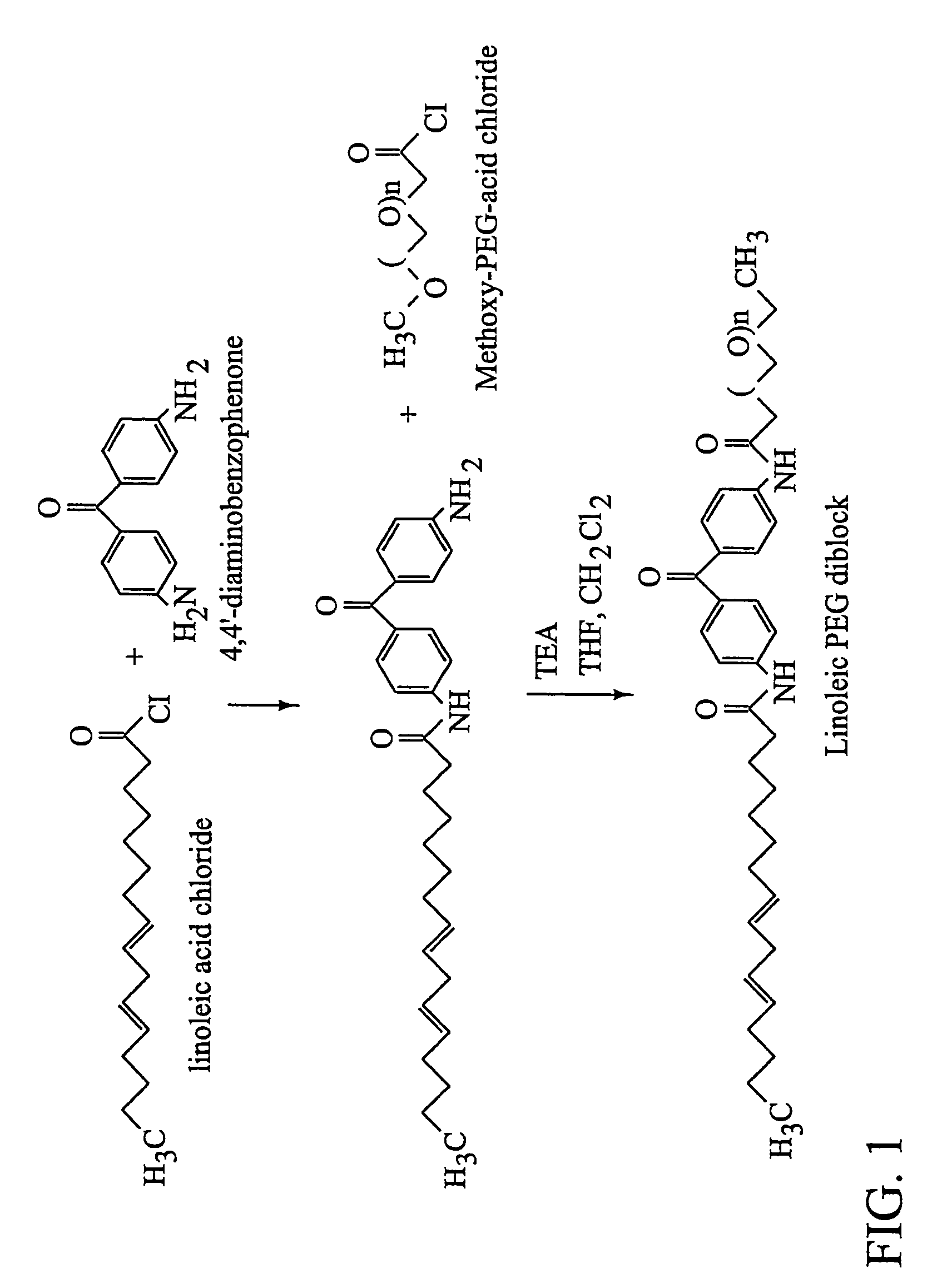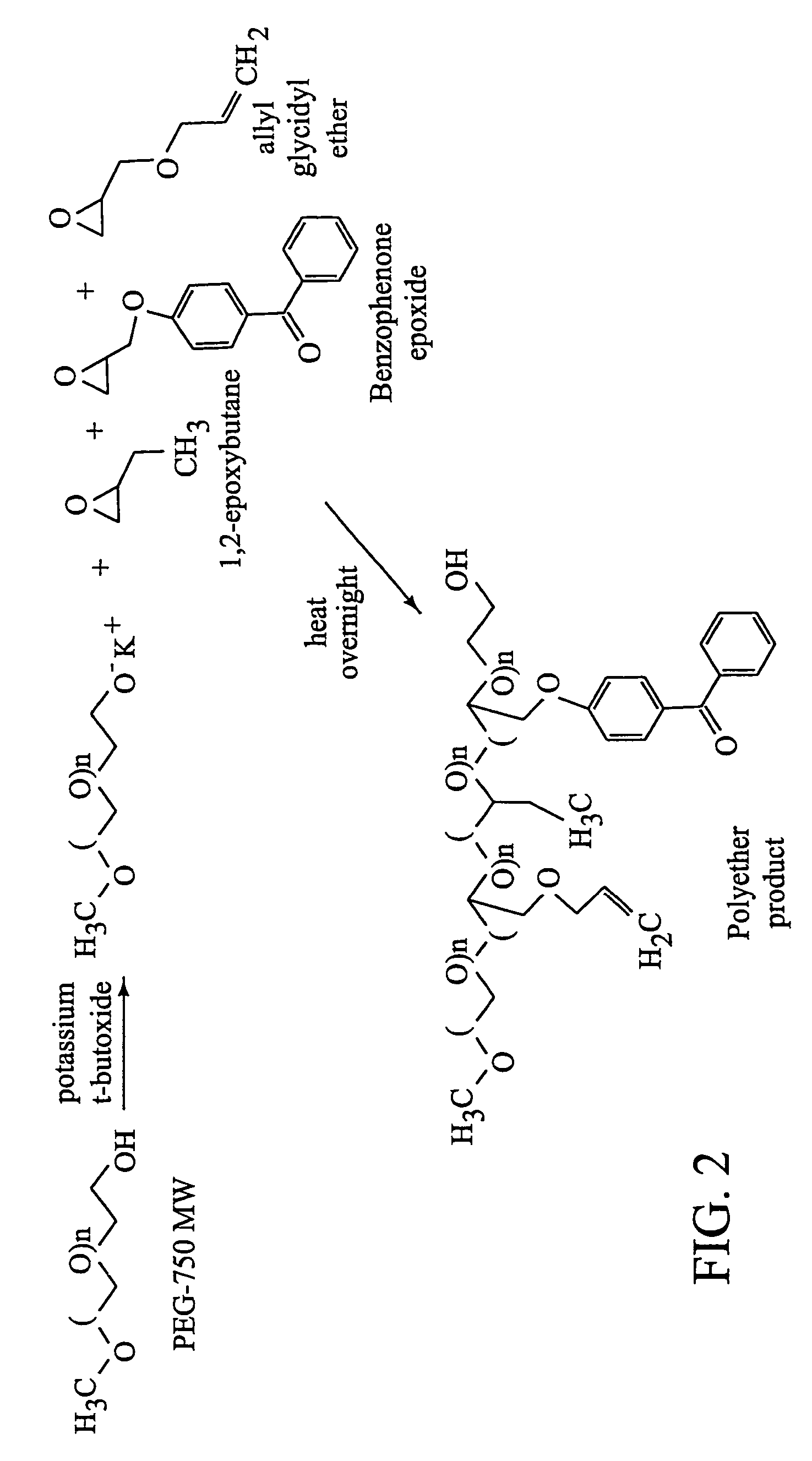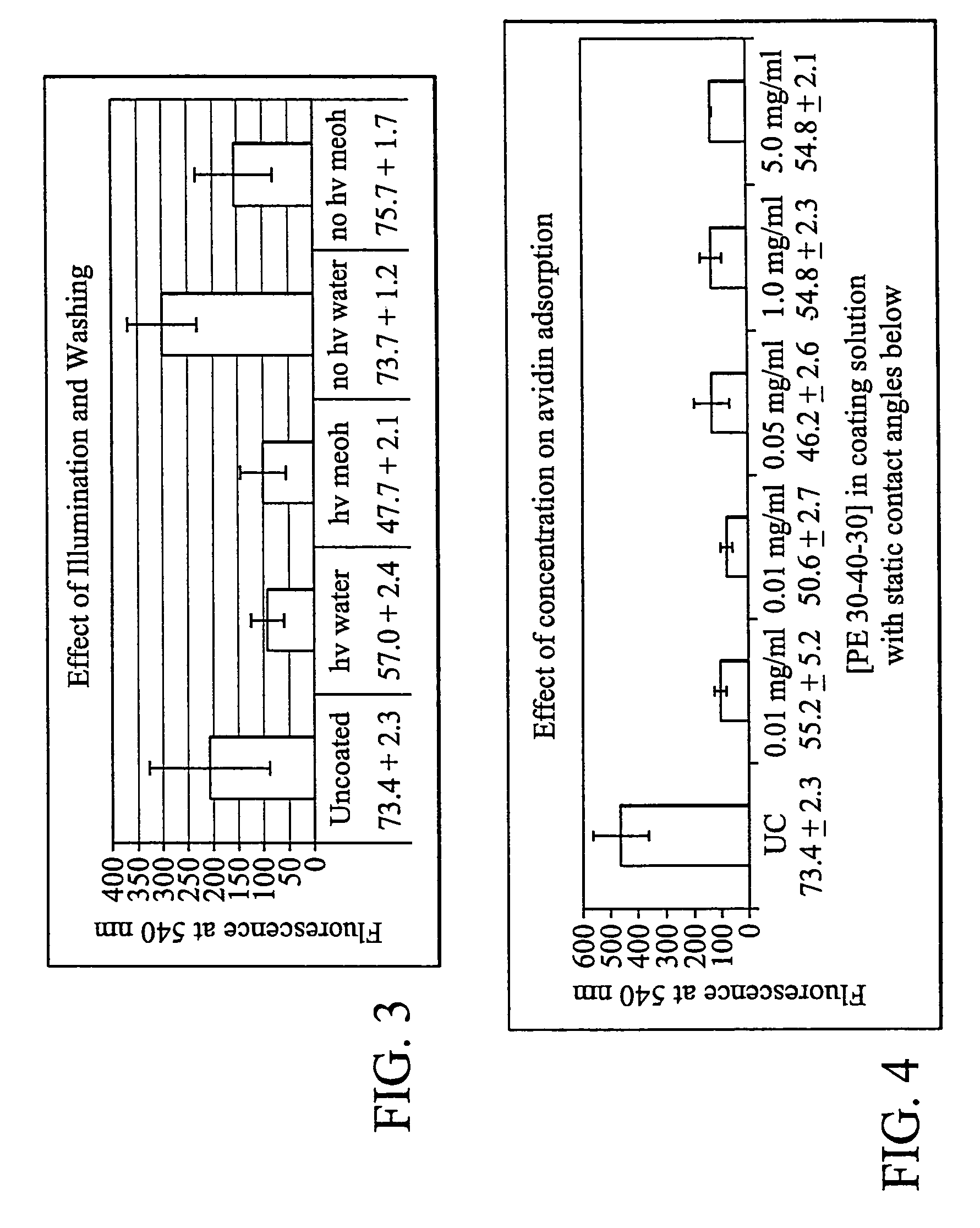Self assembling monolayer compositions
a monolayer and composition technology, applied in the field of self-assembling monolayers, can solve the problems of insufficient compatibility of most binding proteins with glass or other surfaces used in the fabrication of biosensors, the surface is typically not optimized for interaction with bodily fluids, and the conventional coating technique and reagents are often not well designed for applications, etc., to achieve the effect of improving the characteristics and/or performance, reducing the cost and facilitating us
- Summary
- Abstract
- Description
- Claims
- Application Information
AI Technical Summary
Benefits of technology
Problems solved by technology
Method used
Image
Examples
example 1
Synthesis of Fatty Acid-PEG Compounds
[0131]Linoleic acid was chosen as a representative fatty acid to describe the synthesis of photoreactive fatty acid-PEG diblocks. The linoleamide PEG compounds synthesized consist of two domains, including a methoxy-terminated PEG domain and a hydrophobic linoleic domain. The overall synthetic scheme to produce linoleamide PEG compounds included the initial attachment of 4,4′-diaminobenzophenone to linoleoyl chloride, followed by the attachment of a PEG compound, suitably functionalized with an acid chloride moiety as seen in FIG. 1. Purification was typically required after the first step, in order to remove undesired products, including unreacted reagents and products in which linoleoyl chloride reacted at both amino positions.
Addition of 4,4′-diaminobenzophenone to linoleoyl chloride
[0132]The diaminobenzophenone (0.71 g) was dissolved in dry tetrahydrofuran (THF, 65 ml) in a flame-dried roundbottom flask under a nitrogen atmosphere. Linoleoyl ...
example 2
Coating Methodology
[0138]Several coating methodologies for the photoreactive SAM coatings were examined, incorporating various aspects of conventional procedures for self-assembling molecules. For instance, irradiation of the coatings in both the wet and dry state was compared. Both approaches provided some evidence of surface modification, but the wet irradiation was typically superior to dry. Presumably, drying the substrate disturbs the monolayer that has formed on the surface. While not intending to be bound by theory, it would appear that the hydrophobic portion originally associated with the surface, at the water-substrate interface, might reverse itself and associate with the more hydrophobic air at the air-substrate interface.
[0139]Unless otherwise specified herein, all coatings were performed with a wet irradiation to ensure that the self-assembly remained in place during the photo-fixing process. Solution concentration, temperature, and soak duration were all optimized for...
example 3
Preparation and Characterization of Photoreactive Glass Surface
[0156]The following two methods are described to exemplify the preparation of photoreactive glass surfaces by applying a photosilane reagent (pSil) or a photoreactive polystyrene derivative (pPS). Both of these methods produced surfaces that could covalently bond self-assembling molecules in the presence of ultraviolet (UV) light.
[0157]The photosilane molecule was synthesized so that the silane moiety could covalently bond directly to the glass surface. After UV exposure, this would allow a photogroup, benzophenone, to abstract hydrogen atoms and bond molecules to the top of the silane surface. The photosilane was synthesized by adding 3-aminopropyltriethoxysilane to benzoylbenzoic acid chloride in the presence of triethylamine (Et3N) in tetrahydrofuran to create pSil as seen in FIG. 10. Photosilane was filtered then analyzed by thin layer chromatography (TLC), nuclear magnetic resonance spectroscopy (NMR) and Fourier Tr...
PUM
| Property | Measurement | Unit |
|---|---|---|
| size | aaaaa | aaaaa |
| diameter | aaaaa | aaaaa |
| diameter | aaaaa | aaaaa |
Abstract
Description
Claims
Application Information
 Login to View More
Login to View More - R&D
- Intellectual Property
- Life Sciences
- Materials
- Tech Scout
- Unparalleled Data Quality
- Higher Quality Content
- 60% Fewer Hallucinations
Browse by: Latest US Patents, China's latest patents, Technical Efficacy Thesaurus, Application Domain, Technology Topic, Popular Technical Reports.
© 2025 PatSnap. All rights reserved.Legal|Privacy policy|Modern Slavery Act Transparency Statement|Sitemap|About US| Contact US: help@patsnap.com



